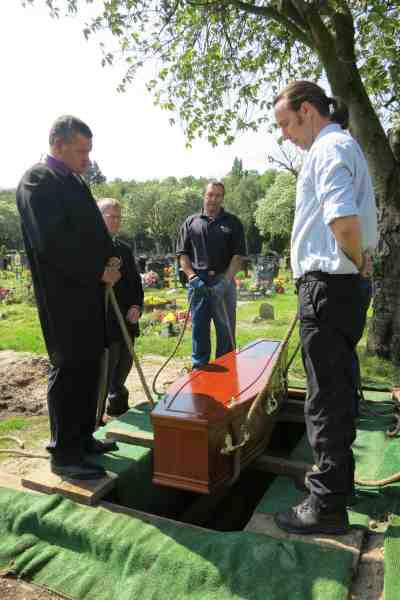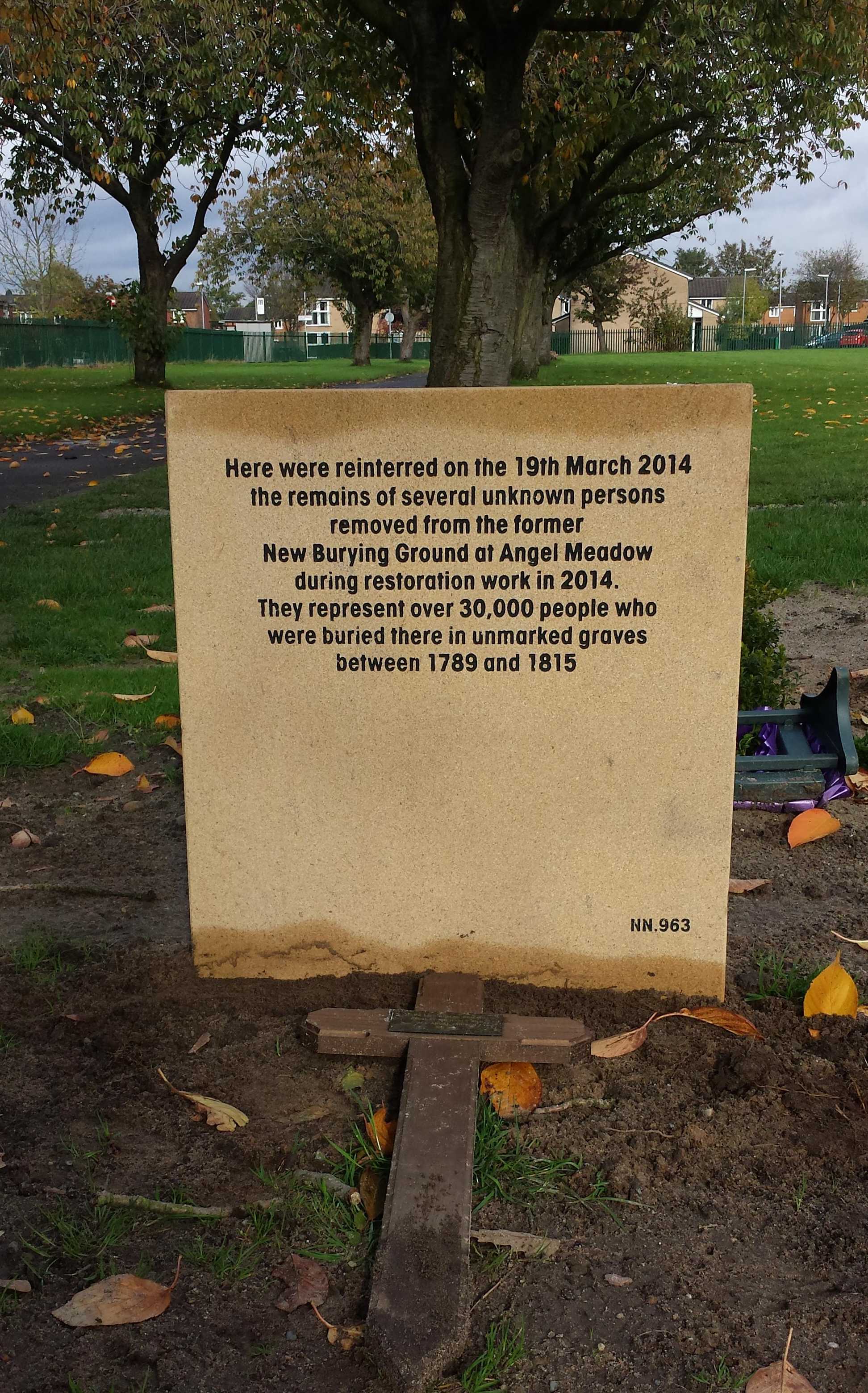New Burying Ground
Ashley Lane Steps
| On page 31 I refer to the uncovering of the remains of four bodies when the
steps from Ashley Lane were being restored and that these were left in place.
The information arrived shortly before the book went to print and it had not
been possible to obtain detailed information in time to present a full and
accurate picture. Subsequent information confirms that a quantity of remains was removed in order to allow for the new foundations. This was done under the supervision of archaeologists. Ian Miller of Oxford Archaeology reports: In the first instance, we excavated a couple of small trail pits to a depth of 1.35m below the modern ground surface to try and establish whether there were any buried remains that might be disturbed. Whilst nothing came to light in these test pits, other than fairly recent deposits, we concluded that we should nevertheless monitor the groundworks just in case. This proved to be a wise precaution, as human remains were exposed at depth when the new foundation trenches were opened up. In total, 917 fragments of human bone were recovered during the course of the work, of which approximately 700 were identifiable. The majority of these bones had been disturbed previously (and I suspect that this had been during the landscaping works carried out in the 1980s/90s), with only a single articulated skeleton being found in-situ. The skeleton was that of a mature adult male (ageing and sexing based on cranium, and sub pubic angle) Overall the condition of the bone was good. Timber staining beneath the pelvis, and around the outside of the skeleton indicate that this individual was interred in a single-wood, single-break coffin and buried on the traditional east/west orientation. Two iron coffin nails were also retrieved from amongst the skeletal remains. A second set of remains, those of a young adult male (probably aged
between 16 – 18 years) were not found in situ or articulated, however when The evidence of rickets displayed by some of the remains is wholly in line with the characteristics of those who would typically have been buried in the New Burying Ground, who would have been poor and highly prone to dietary deficiencies. |
Reburial of Remains
 |
It was a bright and sunny morning when the remains of bodies
removed from Angel Meadow during the rebuilding of the Ashley Lane steps
were reinterred at Manchester Southern Cemetery on Monday 19 March 2014. The
fragmentary remains of twenty-eight individuals were placed in a single
coffin and this was buried in plot NN963 in the 'new' section of Southern
Cemetery, to the north side of Nell Lane. Nothing is known of the identities of those whose remains were reburied. They would all have been buried some time between 1789 and 1815 in common graves containing perhaps as many as fifty unmarked coffins. There would have been no memorial. |
i
|
A memorial stone was installed in October 2014. This was jointly funded by
the Friends of Angel Meadow and Manchester and Lancashire Family History
Society. The memorial reads: Here were interred on the 19th March 2014 the remains of several unknown persons removed from the former New Burying Ground at Angel Meadow during restoration work in 2014. They represent over 30,000 people who were buried in unmarked graves between 1789 and 1815 (Photo courtesy of Cliff Sheffield) |